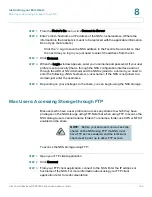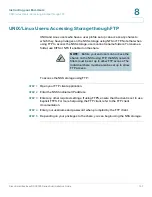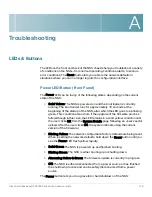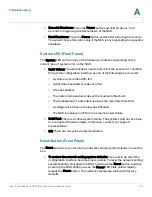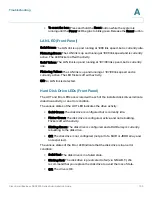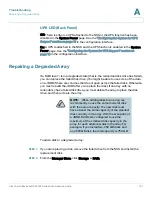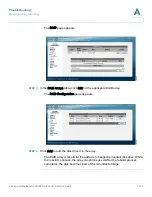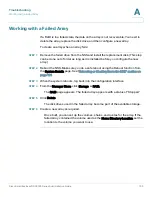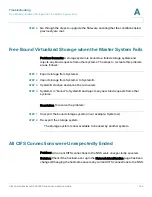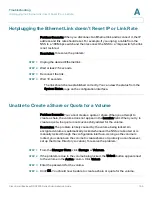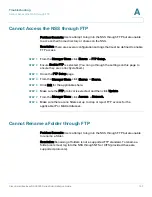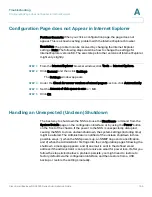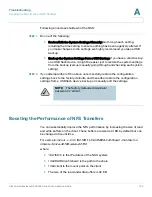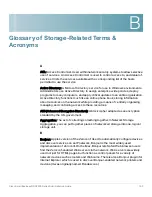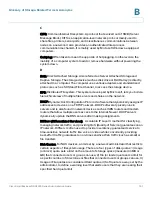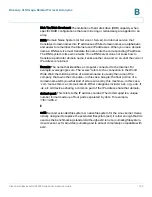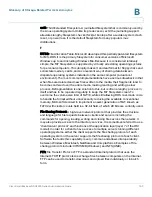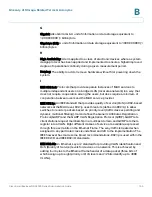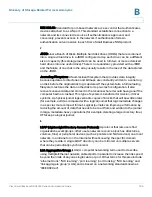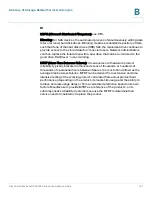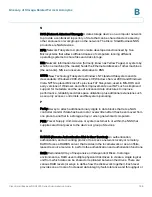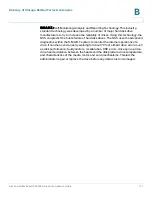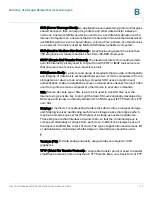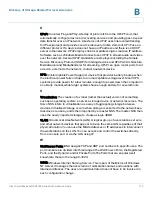
Troubleshooting
Boosting the Performance of NFS Transfers
Cisco Small Business NSS2000 Series Administration Guide
159
A
Following an unclean shutdown of the NSS:
STEP 1
Do one of the following:
•
Review/Edit the System Settings Manually: Go through each setting,
including the time setting to ensure nothing has been negatively altered. If
you make changes to the settings, we highly recommend you take a USB
backup.
•
Back up the System Settings from a USB Backup: If you have a valid backup
on a USB flash device, it might be easier just to restore the system settings
from the backup (versus manually going through and checking each system
setting).
STEP 2
If you attempt either of the above unsuccessfully, restore the configuration
settings back to the factory defaults, and then either restore the configuration
settings from a USB flash device backup or manually edit the settings.
Boosting the Performance of NFS Transfers
You can substantially improve the NFS performance by increasing the size of read
and write buffers on the client. These buffers are sized at 4 KB by default but can
be changed at mount time.
For example:
mount -v -t nfs 192.168.1.1:/mnt/RAIDA/vol1/share1 /mnt/client -o
nfsvers=3,rsize=32768,wsize=32768
where:
•
192.168.1.1 is the IP address of the NSS system
•
/mnt/RAIDA/vol1/share1 is the path to the share
•
/mnt/client is the mount point on the client
•
The size of the read and write buffers is 32 KB.
NOTE:
The factory default administrator
password is "admin".

